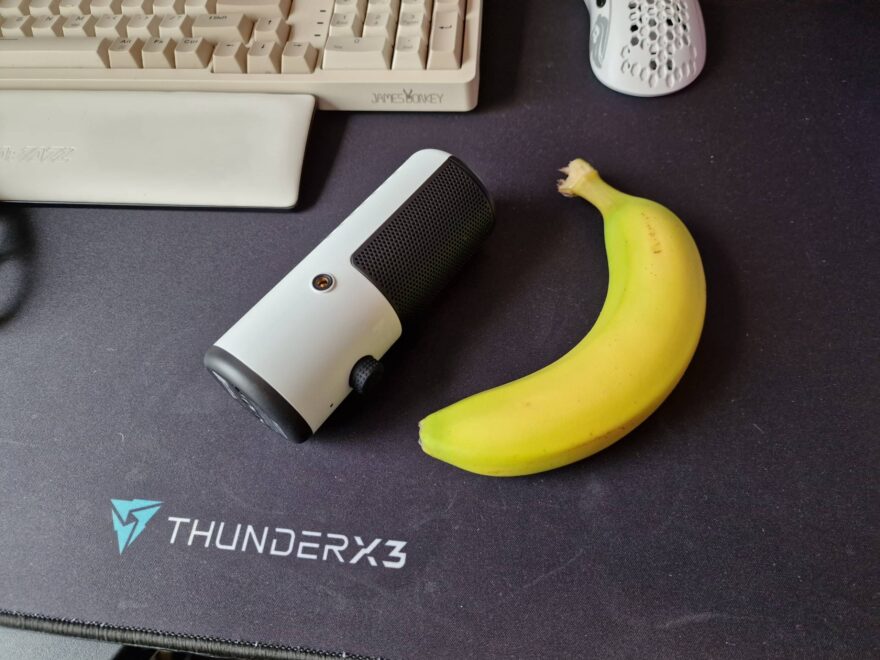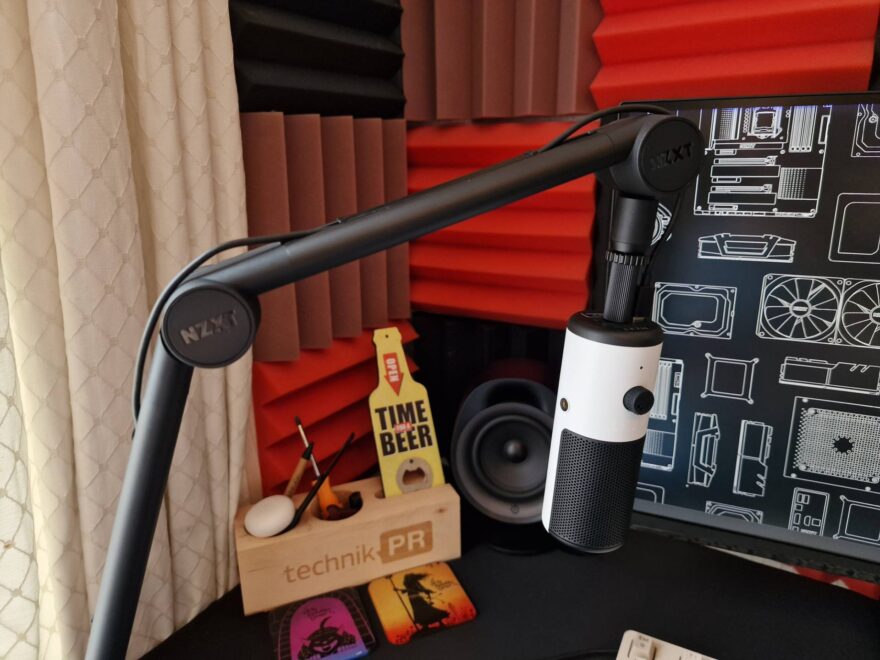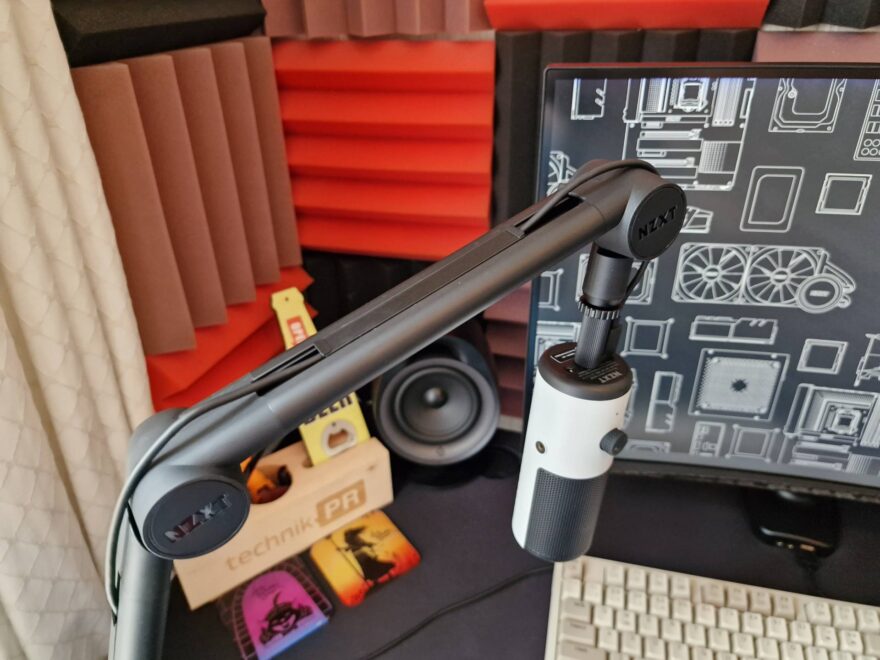NZXT Capsule and Boom Mini Review
Peter Donnell / 1 year ago
A Closer Look
The Capsule mini comes in a choice of either black or white, so it should match up with the majority of NZXT hardware, but also should easily integrate with just about any colour scheme use have due to the monochrome choices. The black is certainly going to be less intrusive or distracting though, while the white does tend to grab your attention a little, but hey, that’s all subjective.

It’s not all that different looking to the full-size version either, which I really appreciate, as the full-size Capsule is a good-looking bit of kit! From the front though, the larger model has two dials on the front, while this model slims that down to a single dial. The other dial was a pick-up pattern adjustment, but the mini is fixed into Unidirectional, which is fine for me, as that’s the one I personally use.

The microphone is built into the middle of the extremely robust-looking and feeling metal housing. There’s a hard metal perforated grill on the front (the black bit) and there’s a bunch of light foam in there too to act as a pop and wind filter for the microphone itself, so it should sound pretty great even when you’re right up close to it.

Around the back, it has a larger perforated design, and actually, these holes are a design we see across many NZXT products these days, so it’ll match the case from panels, motherboard VRM covers and more, which is awesome, I love this attention to detail as it gives it true brand identity.

The bottom of the microphone is simple enough, offering up a Type-C port. The cable is included, but being Type-C, you can replace the cable as you see fit with one of your own. There’s a standard screw mount here, which can be used to mount to the Boom Arm or Boom Arm Mini, or literally countless other tripod mounts and accessories that are on the market these days. There’s also a 3.5mm jack, so you can monitor the recording latency-free, which is awesome.

The stand is simple enough, a flat metal disc makes the base and U-shaped arms screw into either side of the microphone with adjustment screws. This allows you to adjust the overall angle of the microphone to some degree.

As for the Boom Arm Mini, it looks just like the Boom Arm, but well, a bit smaller, a bit slimmer, and all the better for it too. It still has that enclosed tubing design too, so there’s a cable routing channel built in to keep everything neat and tidy.

All the springs and friction locks are built-in too, unlike cheaper models where you can see springs and arms joining the sections, this is a much cleaner and more professional look overall.

It’s tool-free too, you can just twist the dials on the elbow sections to adjust the tension until it’s just right. Leave it too loose the boom arm will raise or straighten, leave it too tight and adjustments can be difficult, but it’s easy to dial in and soon you can make one-hand movements of the microphone and it’ll stay where you let go.

Just don’t overdo it.

The built-in cable routing is great though, and it saves the use of cable ties and other unsightly efforts to get good cable routing.




















